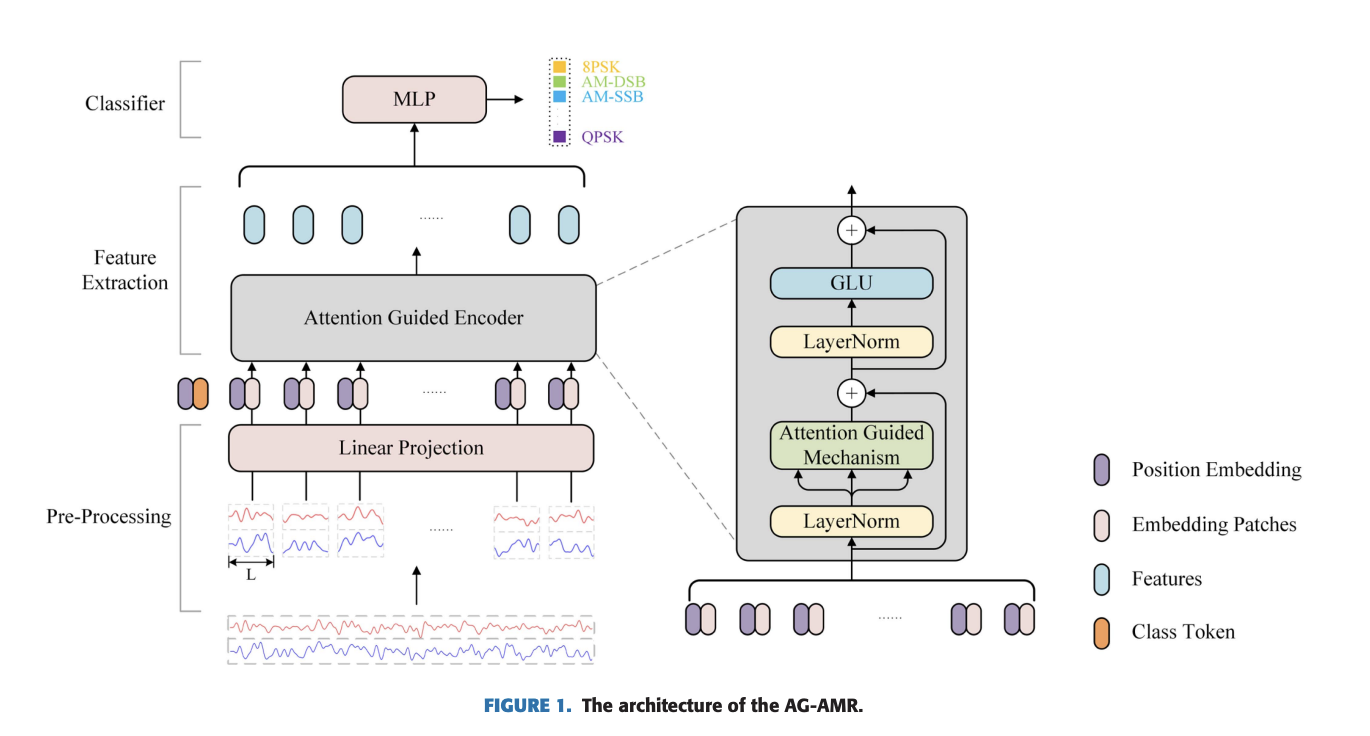
Advancements in Automatic Modulation Recognition (AMR)
The rapid growth of wireless communication technologies has led to increased use of Automatic Modulation Recognition (AMR) in areas like cognitive radio and electronic countermeasures. However, modern communication systems present challenges for maintaining AMR performance due to their varied modulation types and signal changes.
Deep Learning Solutions for AMR
Deep learning-based AMR algorithms are now the top choice for wireless signal recognition. They offer:
- High Performance: They excel at recognizing complex signals.
- Automated Feature Extraction: They require less manual input.
Despite their strengths, these models can be vulnerable to small changes in input signals, which can lead to incorrect classifications. Researchers are exploring defense strategies, such as detection-based methods and adversarial training, to enhance the reliability of these models.
Challenges of Adversarial Training
While adversarial training can improve robustness, it also:
- Increases computational costs.
- May reduce performance on clean data.
- Can lead to overfitting in complex models.
Finding a balance between robustness, accuracy, and efficiency is crucial for reliable AMR systems.
Introducing AG-AMR
A research team from China has developed a new method called Attention-Guided Automatic Modulation Recognition (AG-AMR) to tackle these challenges. Key features include:
- Optimized Attention Mechanism: Enhances feature extraction during training.
- Two-Channel Image Conversion: Transforms input signals into images for better processing.
- Multi-Head Self-Attention (MSA): Focuses on important signal areas, filtering out noise.
- Gated Linear Unit (GLU): Improves information flow for better temporal task processing.
This framework efficiently extracts relevant features, reduces complexity, and enhances resilience against adversarial attacks.
Experimental Validation
The AG-AMR method was thoroughly tested against various models using public datasets. The experiments demonstrated that:
- AG-AMR outperforms existing models in resilience and accuracy.
- Deeper networks with optimized parameters improve recognition accuracy.
Conclusion
AG-AMR marks a significant step forward in automated modulation recognition, effectively addressing challenges in dynamic wireless environments. Its superior performance makes it a promising solution for real-world applications.
For more information, check out the Paper. Follow us on Twitter, join our Telegram Channel, and connect with our LinkedIn Group. Join our 75k+ ML SubReddit for more insights.
Transform Your Business with AI
Stay competitive by leveraging Transformer-Based Modulation Recognition. Here’s how AI can enhance your operations:
- Identify Automation Opportunities: Find key areas for AI to improve customer interactions.
- Define KPIs: Ensure your AI efforts have measurable impacts.
- Select an AI Solution: Choose tools that fit your needs.
- Implement Gradually: Start small, gather data, and expand wisely.
For AI KPI management advice, contact us at hello@itinai.com. Stay updated on AI insights via our Telegram or @itinaicom.
Explore how AI can transform your sales processes and customer engagement at itinai.com.

























